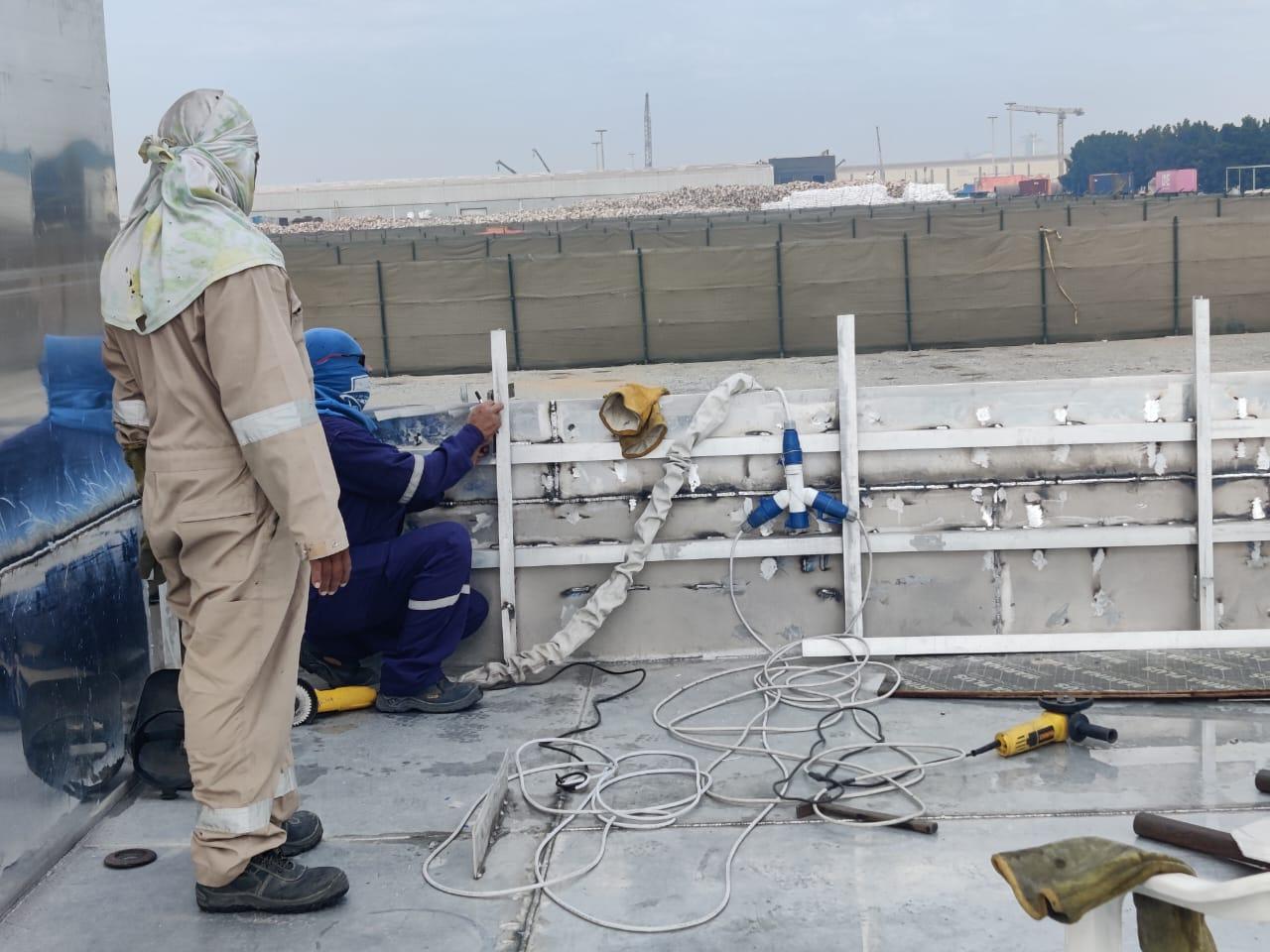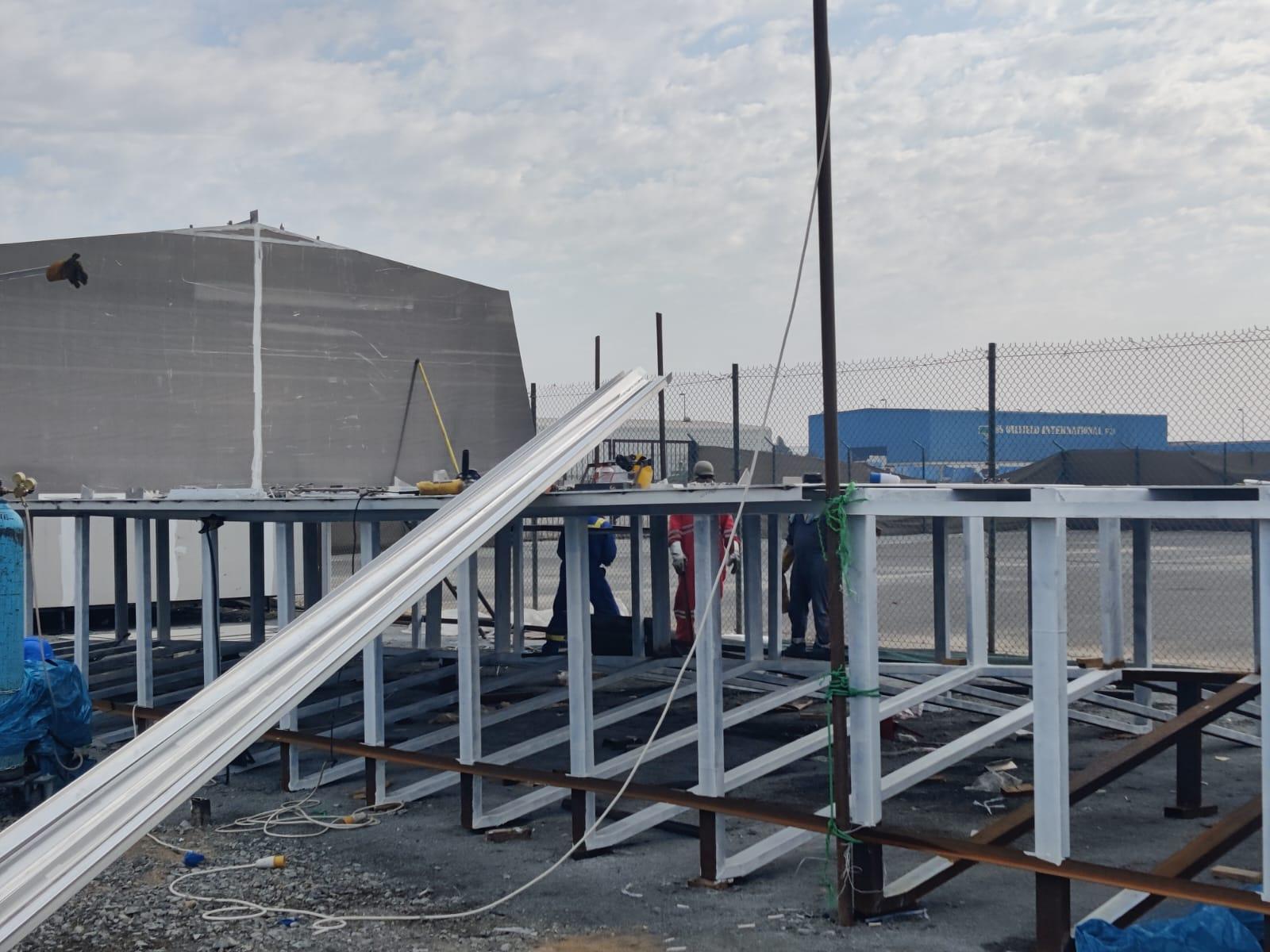Aluminium Barge Manufacturers: Lightweight Doesn’t Mean Less Durable

In the marine industry, durability is everything. Saltwater, heavy loads, and long operational hours push vessels to their limits. For decades, steel was the unquestioned material of choice for barge construction. But the tide is turning literally and figuratively. Aluminium barge manufacturers are proving that you don’t have to trade strength for reduced weight. In fact, you can have both.
Why Aluminium Barges Are Gaining Ground
Here’s the thing, marine services in UAE are facing new challenges. Rising fuel costs, stricter environmental regulations, and the need for faster deployment all make efficiency a top priority. Aluminium, with its high strength-to-weight ratio, ticks every box.
A typical aluminium barge weighs 30–40% less than its steel counterpart. That reduced mass means lower fuel consumption, easier towing, and faster acceleration. But here’s where the skepticism comes in: does lighter mean weaker? The answer is a clear “no” and the reasons go beyond simple metallurgy.
The Strength Equation: Aluminium vs. Steel
Steel is undeniably strong, but aluminium’s properties bring a different kind of toughness to the table.
| Feature | Aluminium | Steel |
|---|---|---|
| Weight | ~2.7 g/cm³ | ~7.85 g/cm³ |
| Corrosion Resistance | High (naturally forms oxide layer) | Lower (needs protective coating) |
| Maintenance | Low | Moderate to high |
| Lifespan in Marine Use | 30+ years with care | 20–25 years depending on upkeep |
| Repairability | Excellent (welding-friendly) | Good, but prone to rust return |
In other words, aluminium’s lower density doesn’t come at the expense of structural integrity. When designed properly, an aluminium barge can match or even exceed the working life of a steel-built vessel.
How Manufacturers Ensure Aluminium Durability
Shipbuilding companies in UAE have fine-tuned aluminium construction to withstand the harshest conditions. These practices are now industry-standard among serious players:
-
Marine-Grade Alloys
Manufacturers use alloys like 5083 and 6082, which offer superior corrosion resistance and strength in seawater environments. -
Reinforced Framing
Strategic placement of bulkheads, cross frames, and stringers ensures load distribution without excess weight. -
Advanced Welding Techniques
MIG and TIG welding methods tailored for aluminium keep joints strong and resistant to fatigue. -
Protective Coatings & Anodizing
Although aluminium naturally resists corrosion, coatings add an extra layer of defense against pitting. -
Quality Control at Every Stage
From metal thickness checks to stress testing, reputable ship manufacturing companies in UAE follow rigorous QA protocols.
Real-World Advantages for Operators
From offshore construction projects to cargo transport, the benefits of aluminium barges are both operational and financial.
1. Lower Fuel Costs
A lighter hull requires less propulsion power, cutting fuel bills by up to 20% compared to steel vessels of similar size.
2. Longer Service Intervals
Corrosion resistance means fewer drydock visits and less downtime, a huge win for marine service providers in UAE.
3. Better Payload Efficiency
Reduced vessel weight means a greater percentage of total displacement can be dedicated to cargo or equipment.
4. Faster Deployment
Lighter barges are easier to launch, tow, and reposition, critical for projects on tight schedules.
Common Myths About Aluminium Barges
Let’s clear the air on a few misconceptions:
-
“Aluminium dents easily.”
Not when marine-grade alloys are used. The structural reinforcement inside barges prevents deformation under heavy loads. -
“They can’t handle extreme weather.”
Modern designs have proven themselves in everything from Gulf sandstorms to North Sea swells. -
“Repairs are tricky.”
Skilled welders can repair aluminium just as efficiently as steel, sometimes faster due to reduced prep work.
The UAE’s Strategic Advantage in Aluminium Barge Production
The UAE has become a hotspot for aluminium barge manufacturing for several reasons:
-
Access to High-Quality Aluminium
Local production and imports ensure a steady supply of marine-grade alloys. -
Experienced Shipyards
Decades of expertise from ship building companies in UAE mean craftsmanship is world-class. -
Proximity to Key Markets
Barges built in the UAE can be deployed rapidly to the Middle East, Africa, and South Asia. -
Integration with Other Marine Services
Many manufacturers also offer towing, maintenance, and retrofitting, creating a one-stop solution.
Case Study: How Aluminium Barges Changed a Construction Project Timeline
A marine contractor in Abu Dhabi needed a multipurpose barge for offshore piling work. A steel option would have taken 16 weeks to build and weighed over 250 tonnes. By choosing an aluminium build, they got:
-
A 35% lighter vessel
-
Delivery in just 10 weeks
-
Fuel savings of roughly AED 12,000 per month during operation
The reduced build time allowed the contractor to start the project six weeks earlier, securing additional revenue and meeting their client’s deadline ahead of schedule.
Top 5 Trends in Aluminium Barge Manufacturing
-
Hybrid Propulsion Integration – Combining lightweight hulls with electric or hybrid drives for ultra-low emissions.
-
Modular Deck Systems – Allowing quick reconfiguration for different cargo or equipment.
-
Enhanced Ballast Systems – Improving stability without adding excessive weight.
-
Self-Propelled Barges – Reducing the need for tug support in certain operations.
-
Digital Monitoring – Real-time hull stress and performance tracking via onboard sensors.
FAQs
Q: Are aluminium barges more expensive than steel ones?
A: Upfront, sometimes yes, by around 10–15%. But operational savings on fuel, maintenance, and downtime usually outweigh the initial cost.
Q: Can aluminium barges carry as much cargo as steel ones?
A: Yes. The lighter hull actually increases net payload capacity in many cases.
Q: How long will an aluminium barge last?
A: With proper care, 30+ years is common, especially in warm-water regions like the Gulf.
Opinionated Takeaway
Steel had its era, and it’s still relevant in certain heavy-duty applications. But for a growing number of operations, aluminium barges simply make more sense. They’re lighter, faster to build, cheaper to run, and when built right just as tough as their heavier cousins. In a marine industry that’s evolving toward efficiency and sustainability, aluminium isn’t a compromise. It’s an upgrade.
- Vibnix Blog
- Politics
- News
- Liberia News
- Entertainment
- Technology
- Educación
- Art
- Causes
- Crafts
- Dance
- Drinks
- Film
- Fitness
- Food
- Juegos
- Gardening
- Health
- Home
- Literature
- Music
- Networking
- Other
- Party
- Religion
- Shopping
- Sports
- Theater
- Wellness




